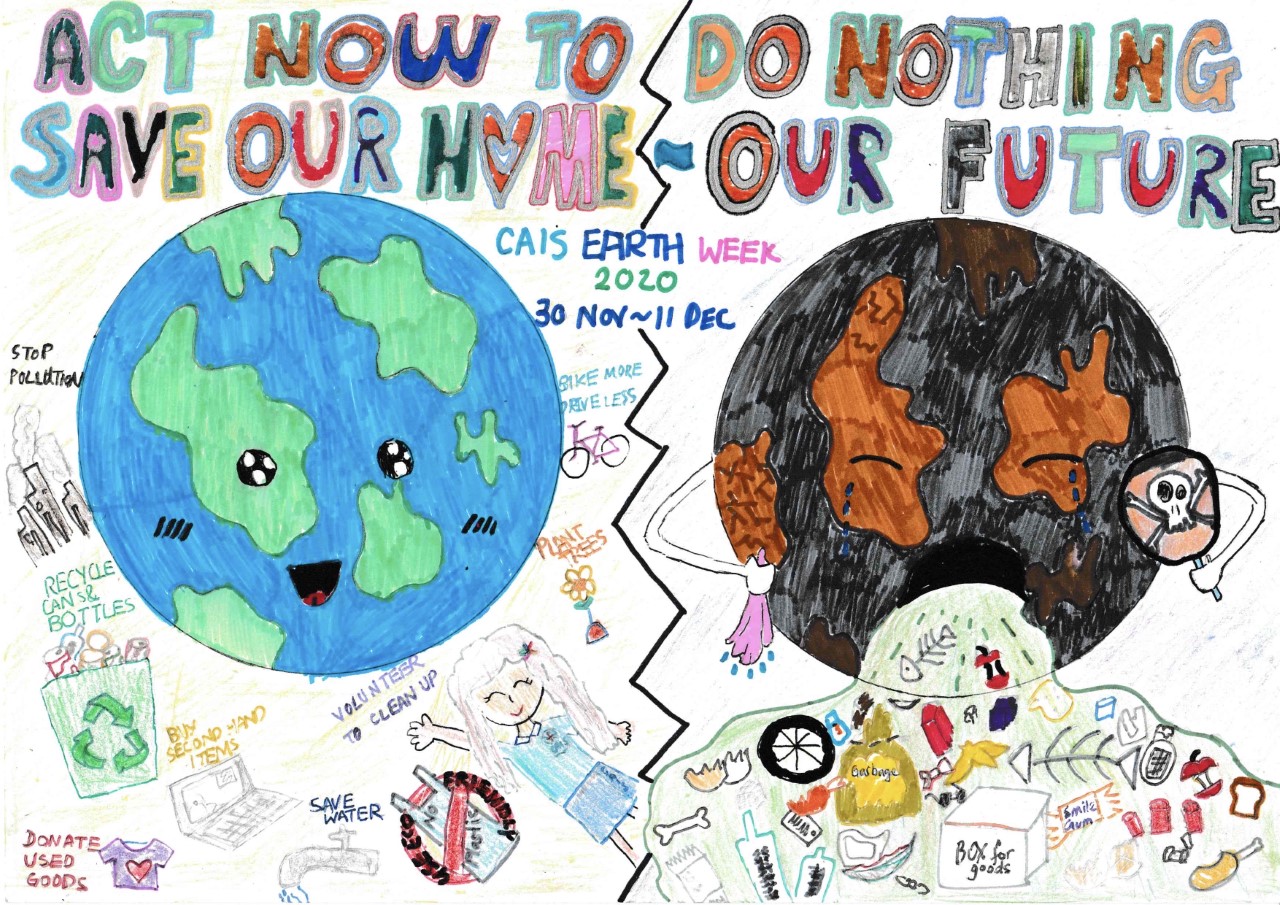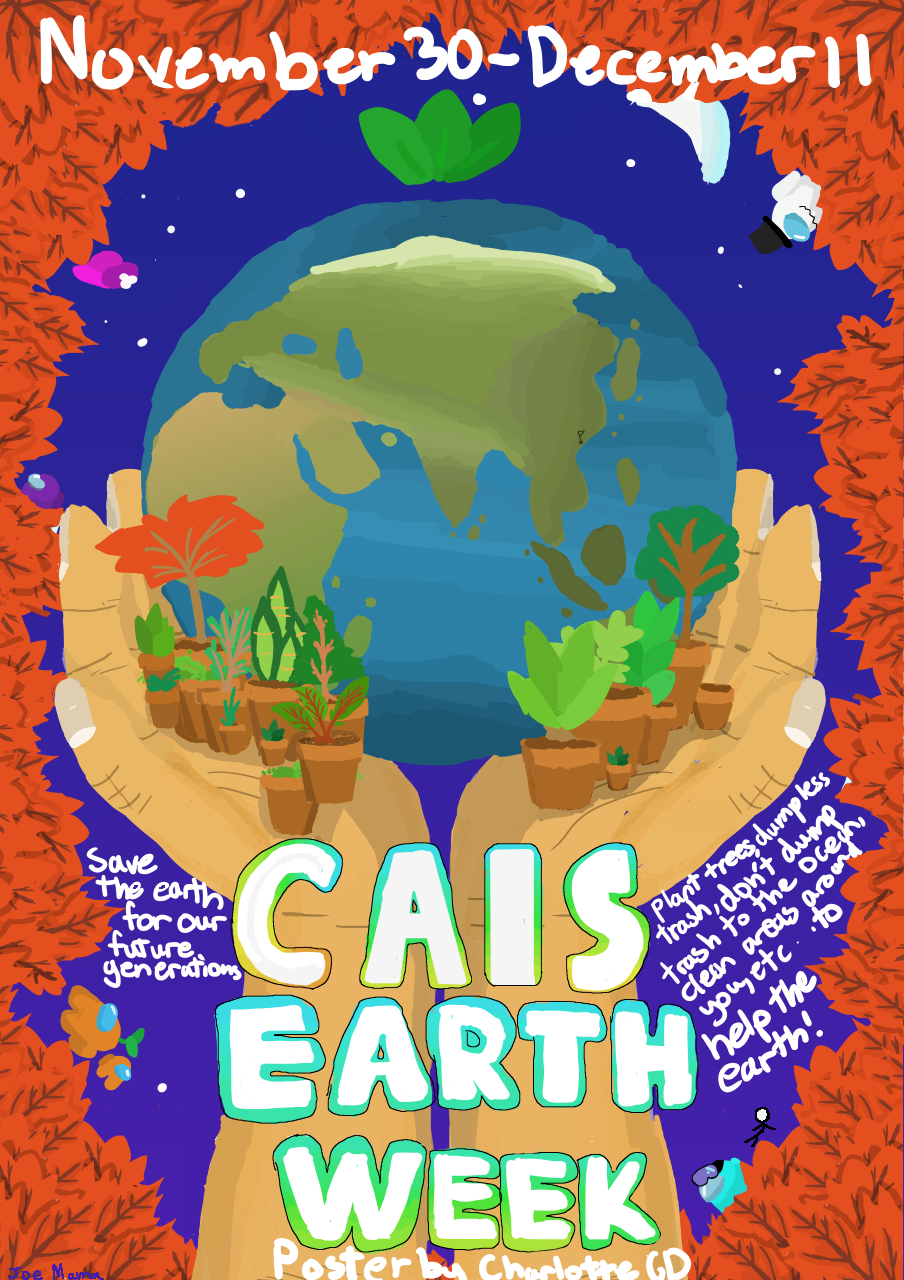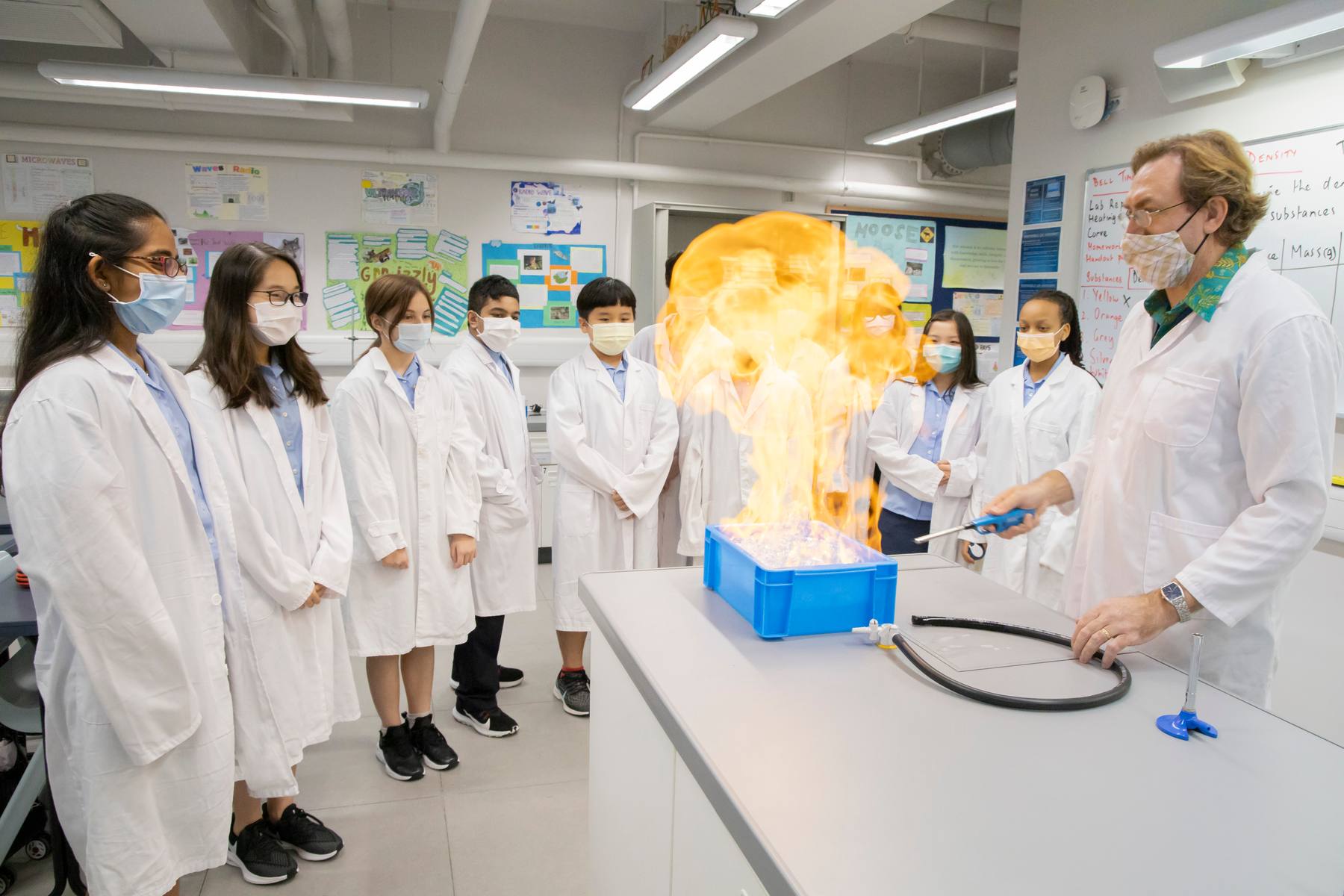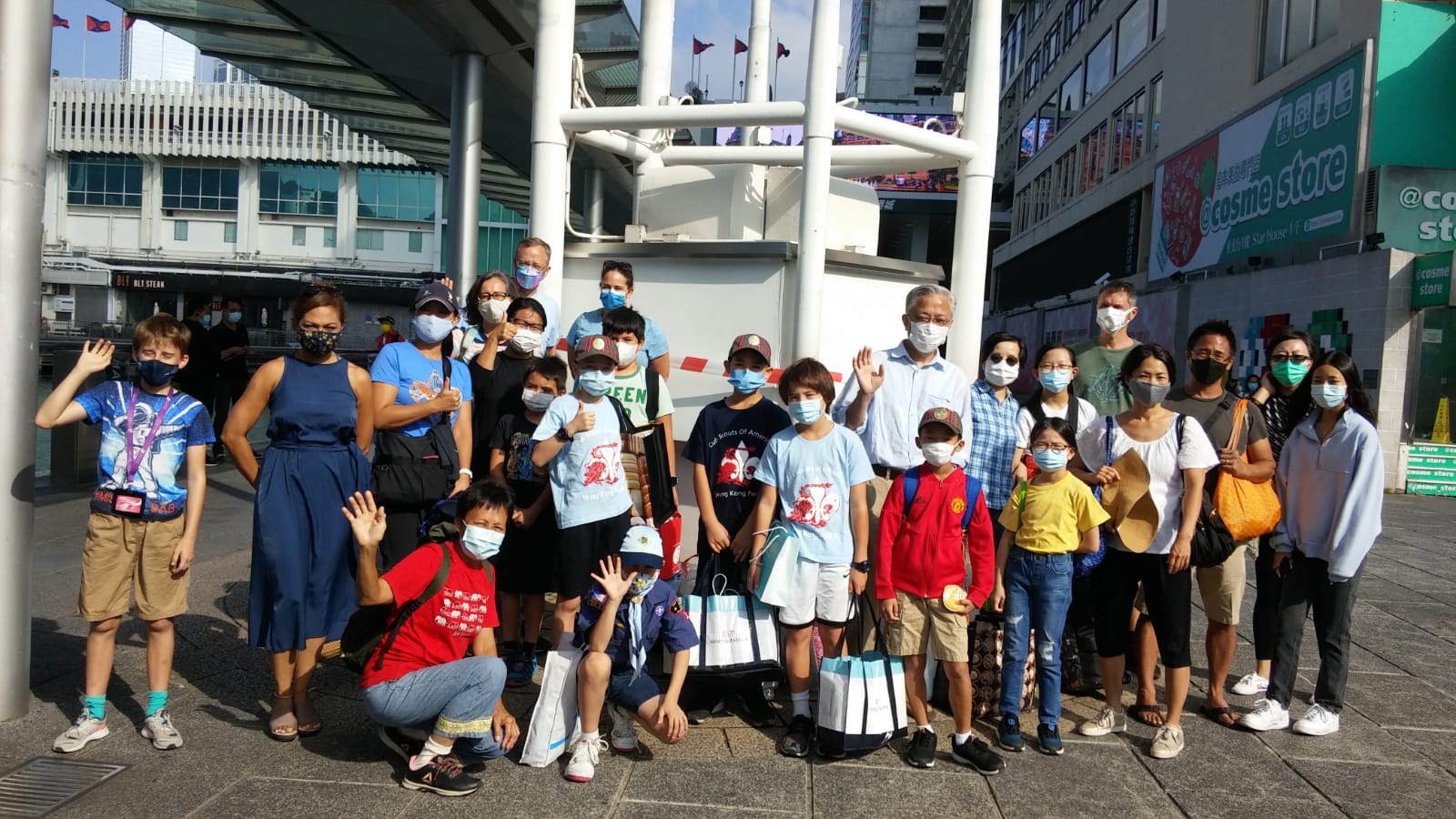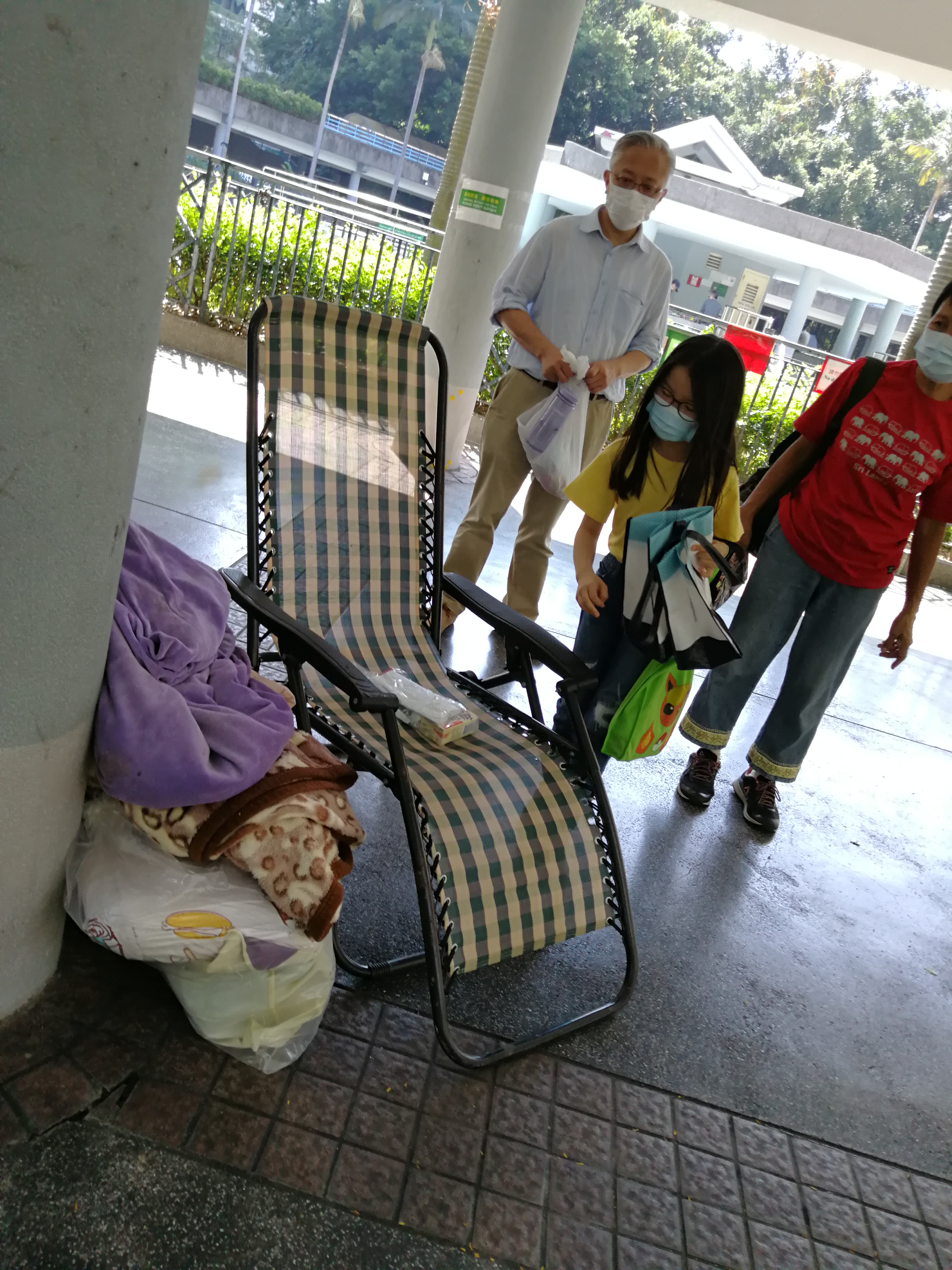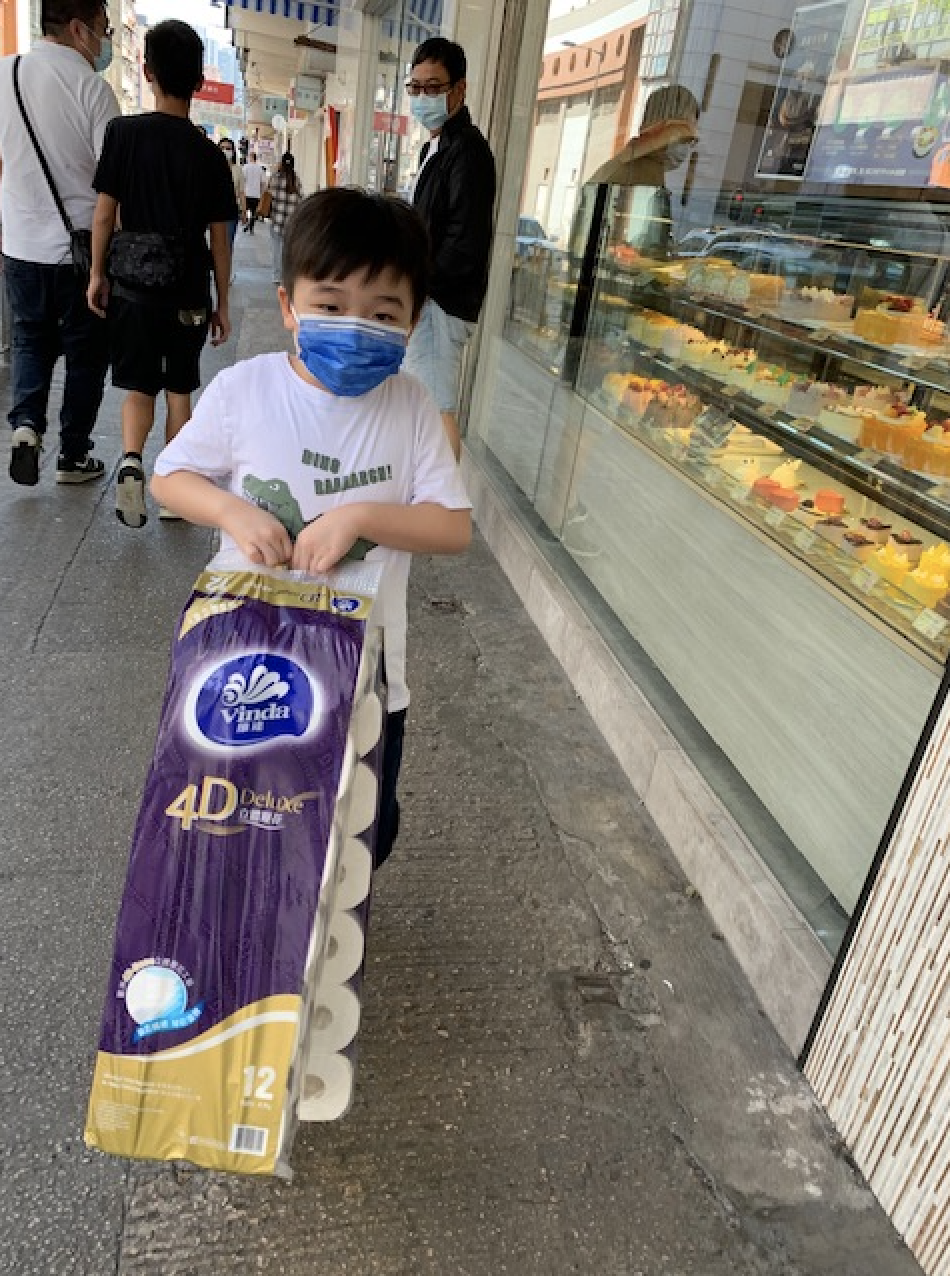How CAIS Student Services help us embrace differences in a year like no other
How CAIS Student Services help us embrace differences in a year like no other
December 23, 2020
With 2020 having just days left to run, many of us are looking forward to celebrating the new year.
2020 was a different and untraditional year for everyone. But that didn’t stop our students from showing resilience and practicing kindness, and the connection of our learning community has gone from strength to strength.
As we head into a new year, we thought we’d introduce our Student Services Department and the exciting new initiatives it offers. Student Services is more than a department at CAIS. It is also the glue that binds all students and teachers – supporting their growth, both personally and professionally.
We spoke to Mr Charles Grayson, Senior Student Services Manager, to learn more about his work and how is it relevant to CAIS students and teachers.
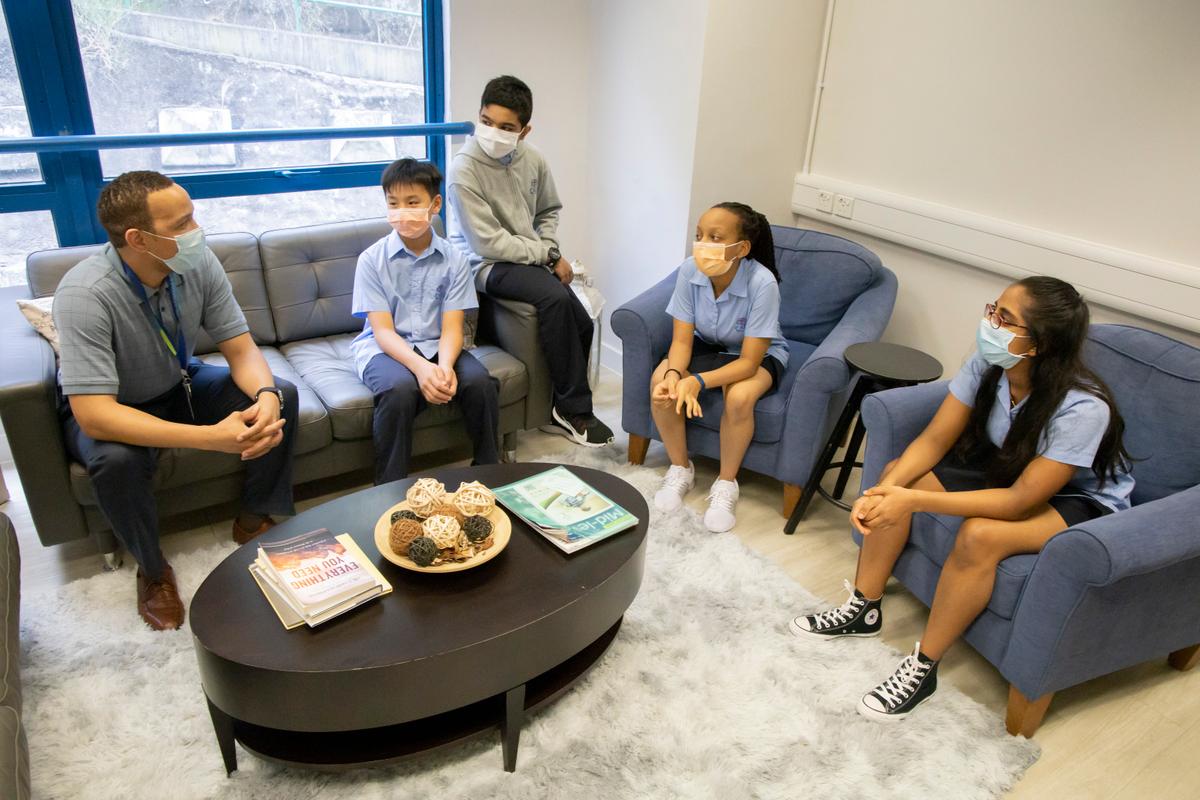 What does your role involve?
What does your role involve?
My role at CAIS is multiple-faceted. However, specifically as it pertains to our special education program, I work to ensure that students here at CAIS are getting the support that they need in order to function to the best of their abilities in the classroom.
My role is not just limited to academic concerns, but to students in need of support behaviorally and emotionally. The beauty of my role is that it works with all levels of the school in creating a unified culture with an appreciation of learning and support systems. This role provides access for the school to become a renowned institution not just known for strong academics and strong Christian faith, but as a premier international school in Hong Kong and globally for the inclusion model.
How do you work with teachers and students?
I like to consider what I do is as a partner and advocate for our primary and high school teachers and students. Our teachers are strong at developing diverse teaching programs to meet the multiple learning needs within the classroom. However, when our teachers have done all that they possibly can do and they still notice that a student(s) is struggling to keep up in class, that is when our department becomes involved. My team of specialized educators quickly assesses and determines the best strategies and learning supports needed for developing students so they can better engage in the classroom. The goal of our department is the same as the general education teachers, to work for the betterment and benefit of all students in providing for them a quality education. Therefore, we take a very Christ-centered and student-centric approach to student learning.
And while we support the teachers, we equally support the students and their parents. Scripture instructs us in Proverbs 31:8-9 (NIV) to “Speak up for those who cannot speak for themselves, for the rights of all who are destitute. Speak up and judge fairly; defend the rights of the poor and needy.”
The Student Services Department advocates for our students and parents. We support the learning needs of children and provide interventions when needed. Our biggest motivation is seeing students thrive academically, emotionally, and behaviorally in ways that they once thought as impossible.
Could you provide more specific details about your program and how does it resonate with CAIS’s inclusive and diverse learning environment?
Our view in learning support is that every student has the right to a fair, balanced, and quality education that is Christ-centered despite their identity, socio-economic status, religion, beliefs, or gender. These rights extend without boundaries of the physical school campus and reach into the very communities that our students are a part of.
At CAIS we strive to ensure that teachers feel developed and prepared for working with all students that have been placed into our care. The CAIS inclusive classroom model promotes the differences among our diverse learners and welcomes the students into the classroom needing support academically, socially, emotionally, or through communication. Thereby, we provide consistent professional development and mentoring among our teachers and staff to ensure that they have the best practices and protocols in place to meet the varying needs of our students today.
Any external tools to be introduced as part of the special education program?
There has been continued work done to ensure that our students have tools to succeed in and outside of the classroom. I am pleased to say that our team have created a space in the school known as the Sensory Corner in room 645. a calming space for all students that addresses their sensory needs for touch, smell, sound, and sight. Other projects are also in the works so check back with me soon…
Conference on International Chinese Teaching and Learning
Conference on International Chinese Teaching and Learning
December 11, 2020

CAIS Chinese Language Teacher Mr Jonah Seto shared ideas on the topic of “Drama-in-Education to Foster Students Higher-Order Thinking Skills” at the Conference on International Chinese Teaching and Learning.
Held virtually on 5-6 December, Mr Seto joined over 150 teachers from other participating international schools to exchange ideas and best practices on Chinese language teaching.
In particular, he highlighted the use of drama in education which was well received in previous academic year where high school students agreed that drama was an engaging platform for them to learn creatively and effectively.
In addition, the Primary Chinese Reading Program was also a positive experience for students.
CAIS Earth Week
CAIS Earth Week
December 11, 2020
The virtual CAIS Earth Week was held successfully between 30 November and 11 December.
Over 800 primary students at CAIS participated in a series of activities to learn more about ways to go green in our everyday lives.
Started off with a e-poster design competition where two winning designs became the official Earth Week promotional posters, students were invited to take on a 2-week challenge to think about the impact of their actions on our climate and what they can do to help.
Through the activities, students learned the 5R rule: Refuse, Reduce, Reuse, Repurpose, Recycle and attended virtual events including a session with Plastic Free Seas.
Winning e-poster designs and their message:
What life lessons can we learn through a virtual science classroom
What life lessons can we learn through a virtual science classroom
December 11, 2020
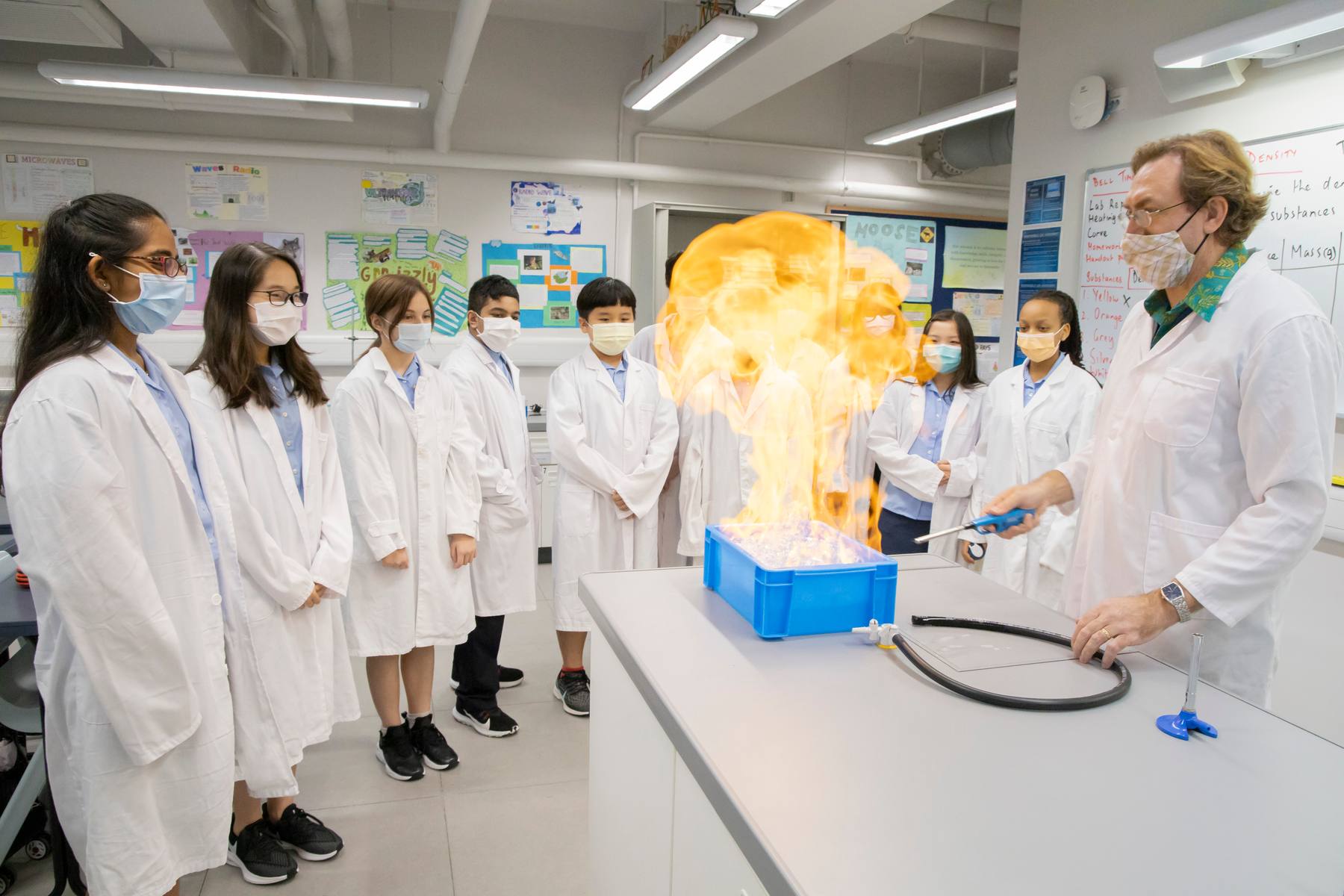
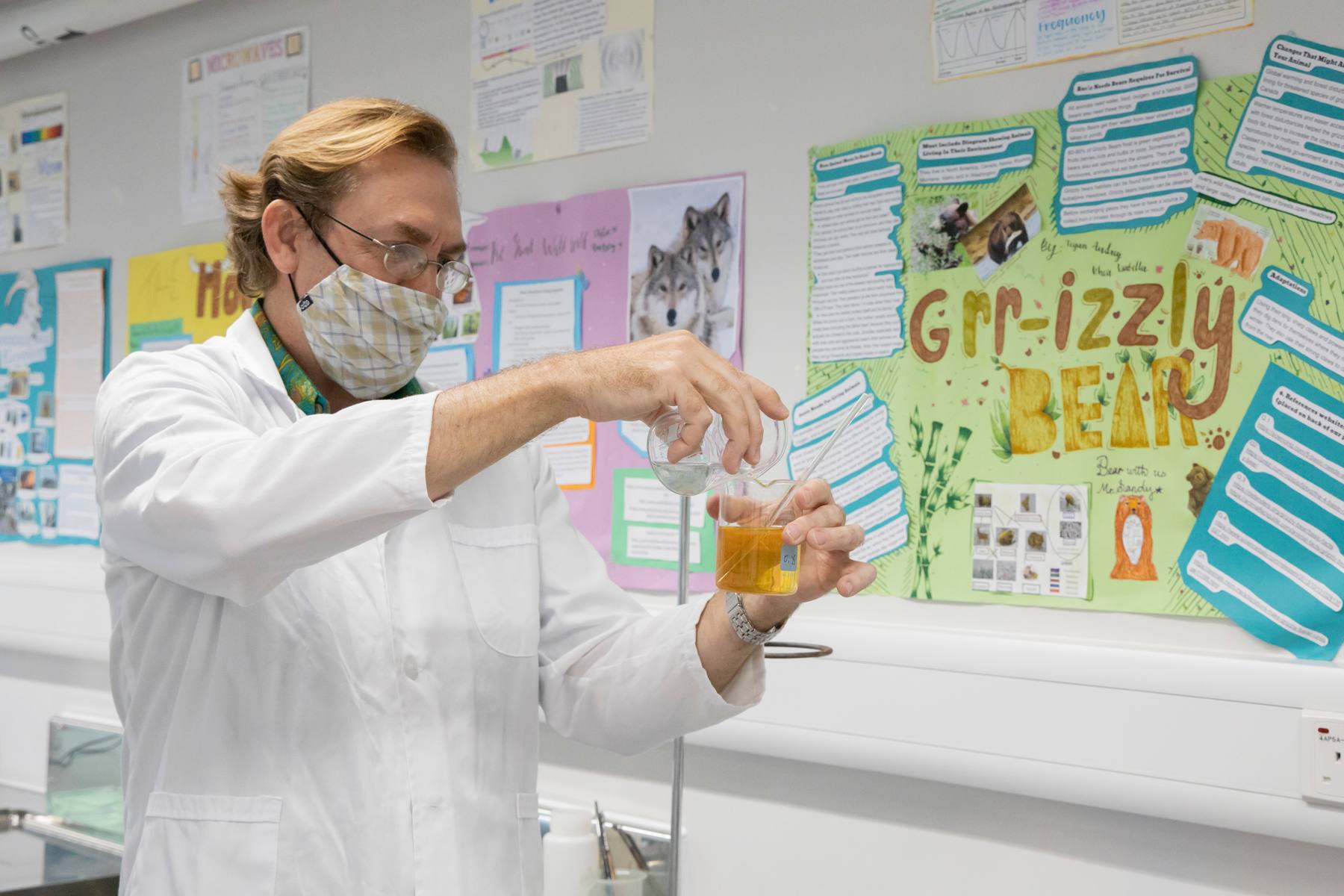
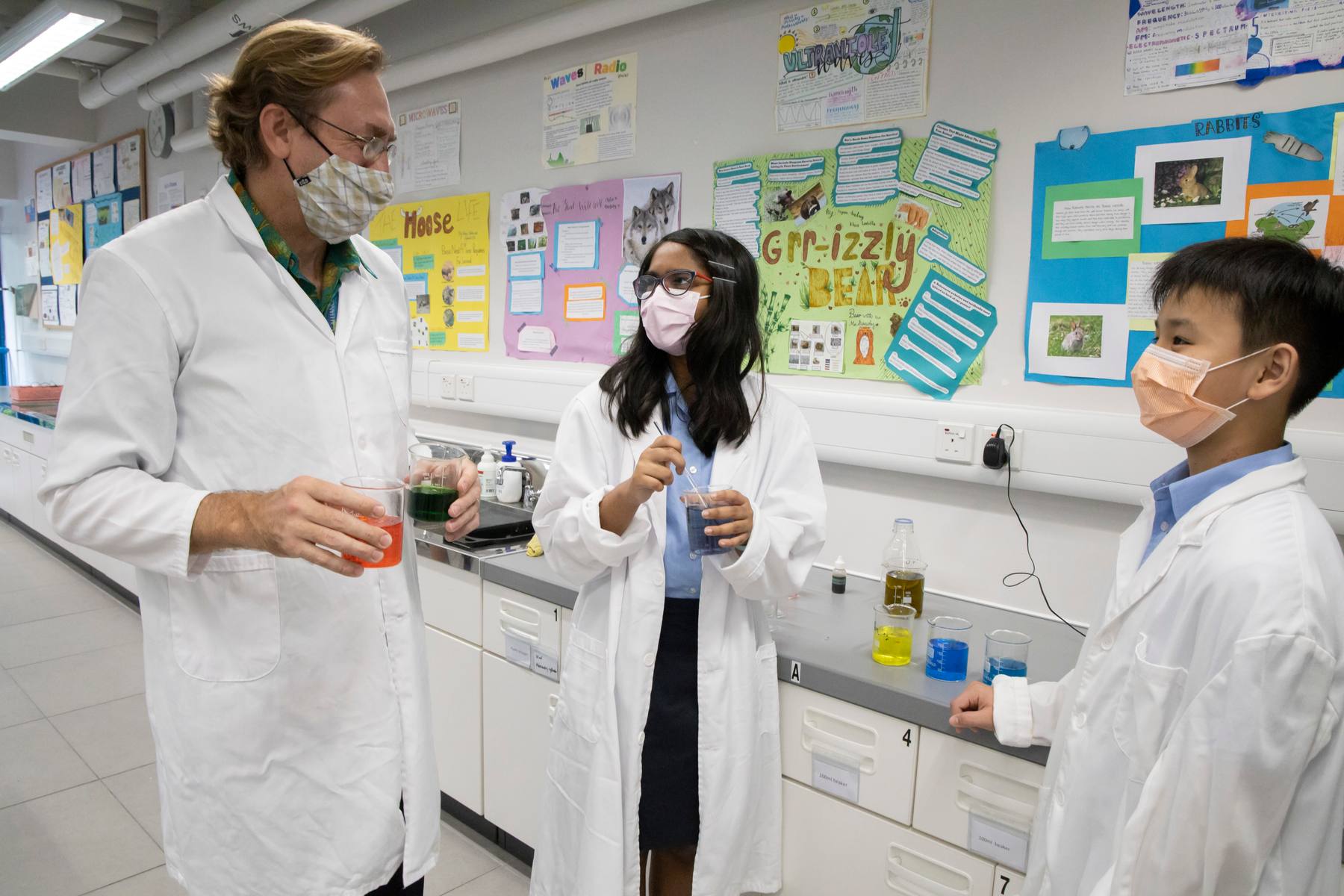
When CAIS High School Science teacher James Sandy took his class online during this year's pandemic, he knew he was going to face challenges getting his students—all of whom had no remote learning experience previously —to fully benefit from the lessons he was presenting.
But the maverick educator from Melbourne, Australia who had a brief stint in the United States before relocating to Hong Kong, seized the unique opportunity by upping the game for a better science virtual classroom bridging the gap between traditional and virtual learning.
The geologist and environmental scientist turned innovative science teacher swiftly adapted to the change by leveraging digital technologies to keep his students engaged with science learning in a virtual classroom.
Not only did students join classroom discussions via video conferencing tools, they also revisited the learning materials and downloaded additional resources so that they could learn at their own pace.
While remote learning was taking place, a series of strategic planning was happening behind the scene. James needed to prepare the transition from online to in-person learning and back to online – the biggest adaptive challenge every educator has had to face this year.
After all, this forced transition has not only forced us to move the classroom online, it has also taught us valuable life lessons. We caught up with James to further explore this theme.
What are some of the lessons you’ve learnt from getting students fully involved in remote learning?
Modifying children’s traditional way of learning is the key. Both teachers and students tried to keep a continuity in learning and then adapt to our Covid reality to transform our traditional learning approach.
Technologies have played an important role in helping us to achieve a successful digital classroom. With software like PowerSchool Learning – a learning management and classroom collaboration solution that allows real-time teacher-student interaction; and Zoom – a cloud platform that provides a virtual space for online learning to take place, students are able to continue to learn, in untraditional ways – which is not a surprise given an untraditional year.
What were some of the challenges you faced during this transition? How did you overcome them?
With challenges come opportunities, both students and I have been finding creative ways to overcome the never-before-imagined obstacles of being disconnected from traditional classrooms.
For instance, when real excursions are not an available option, we turn to “virtual” excursions to help connect students to new ideas and discovery, rather than just watching me talk onscreen.
Another challenge for me is to understand the learning progress of my students when they learn new concepts or work through assignments. With the help of digital tools, students can interact with me online and ask questions or join discussions in ways like traditional classrooms where conversations happen organically.
How has technology changed our approach to learning/ interact with science during Covid?
Digital tools facilitate two-way communication between teachers and students. They are an important platform for us to form conversation and discussion when we are refrained from on-campus learning during Covid.
We might all have struggled initially when adjusting to learning and teaching online. But the process has taught us critical life skills: agility, problem solving and communication.
With digital platforms, students are able to access digital textbooks anytime, which essentially is a big help to supplement our online lessons.
Plus, students are quick learners. They are able to pick up new technologies and get used to virtual learning easily.
What’s the importance of a science education?
Getting students of different ages, genders and backgrounds to appreciate science is important. Technology and science are about creating the ‘wow’ factor. Science education is important because it’s about improving lives and alleviating sufferings.
This year CAIS – and globally – had the biggest adaptive learning experiment and students were rewarded with the opportunity to take charge of their learning, giving them the independence they crave!
And most importantly, I think we all realize online learning is not a terrible idea and can be personal to some extent, with the help of online learning tools.
Most memorable experience at CAIS?
This year when we had to engage students in remote learning, I was impressed by our students who were just proactive learners. They were the driving force for a collaborated virtual classroom.
CAIS is not the first school that I worked with. But I have been given the opportunity to have an impact on students, for which I am very grateful.
I am driven by the good learning attitude of students, appreciation and satisfaction of parents. It’s not an overstatement to say that I look forward to coming back to school every day.
The cordial faculty relationship is also another factor that gives me great encouragement.
Celebrating a unique transformative educational experience
Celebrating a unique transformative educational experience
December 11, 2020

A picture is worth a thousand words.
The above is a rendering image of CAIS Phase II building.
Being able to visualize a transformation before it starts means we can foresee outcomes.
Like Phase I, CAIS Phase II continues to evolve and transform. From the street level, the visual connection between both campus buildings is strong, presenting a simple, yet impactful, outlook.
CAIS has knitted Phase II building into the existing Phase I building at Butterfly Valley, creating a flow between the two, from academic to arts, cultural, sport and beyond.

The new campus building has infused the school with new energy that incorporates not only large creative learning spaces but also thoughtful designs that speak to the school’s desire for greater cultural engagement.
While Phase I supports students’ academic development, Phase II will be a powerhouse of ideas to inspire creativity and motivate students to learn beyond classrooms.
From planning to logistical arrangement, laying the foundation to finishing, it has not been an easy road for CAIS to reach this extraordinary milestone which is five years in the making.
In about this time next year, CAIS Phase II will be up and running, becoming the base for cultural and sport programs.
CAIS Phase II will not only be an extension of Phase I, but a prominent and dynamic cultural and creative space providing opportunities for CAIS students and local community to be part of the transformation process.
We sat with the Client’s Representative of CAIS Phase II project Mr. Ivan Man to talk about concept of Phase II, how CAIS has dedicated this space to art, performance, sport and culture, and what the future holds for CAIS.

Concept of Phase II
There are two stages towards the completion of Phase II: Phase II A as amenities building and Phase II B as indoor swimming pool.
Phase II A comprises of various learning spaces including a Performance Hall, Special Education Centre, English Language Learners Centre, indoor and outdoor sports facilities and a Music Floor.
The completion of Phase II A and II B, combined with Phase I, will offer a spacious campus of approximately 500,000 square feet, alongside a wide array of academic offerings to enhance the learning experience for the school community.
CAIS Phase II will open doors to collaborations for CAIS students, in which non-profits and NGOs will be invited to partner with us and work on a series of community engagement initiatives through art, sports and culture.

From planning to logistics arrangement, laying the foundation to finishing, it has not been an easy road for CAIS to reach this extraordinary milestone which is five years in the making.
Ivan Man
Client’s Representative
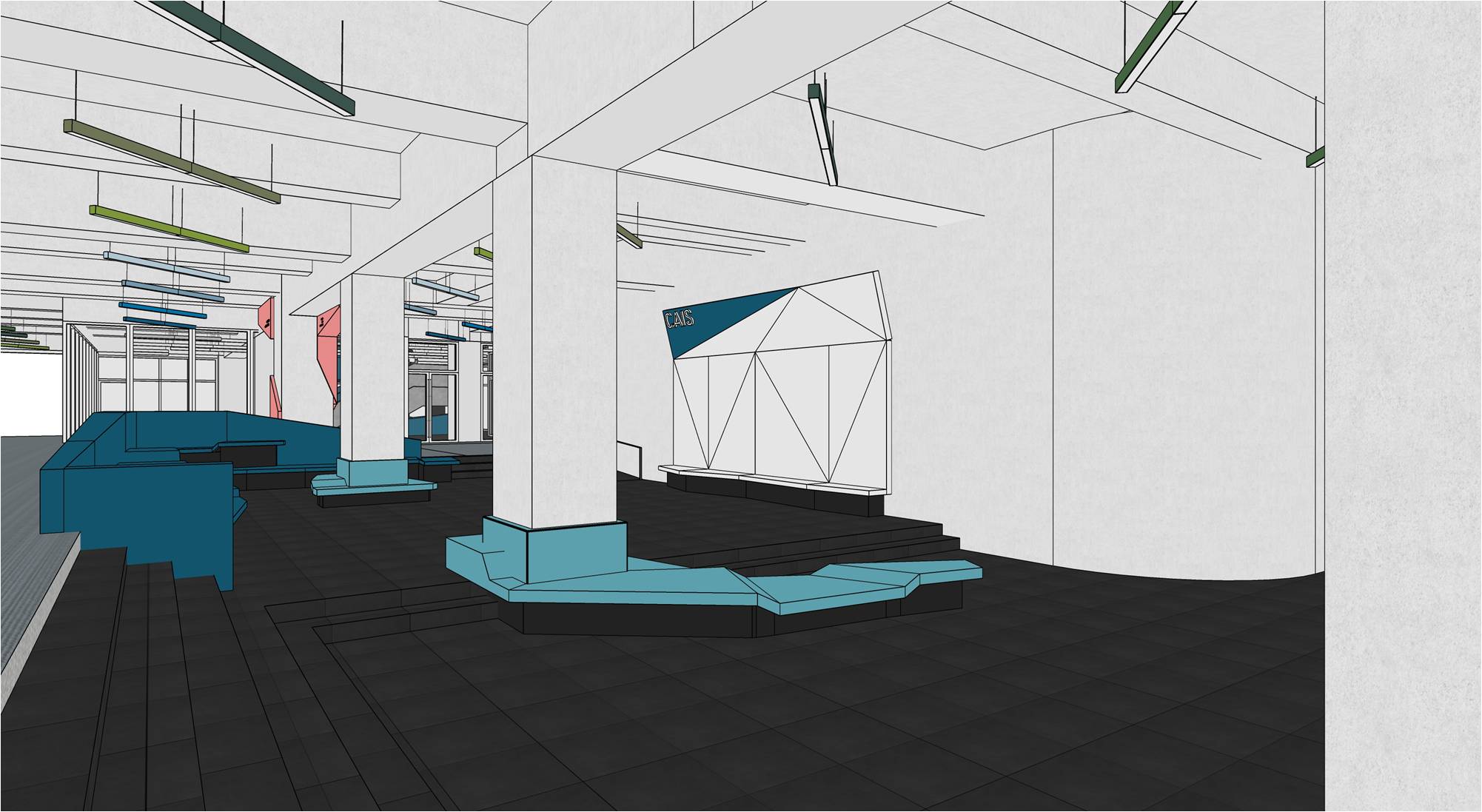
Ground Floor Multi-purpose space
In addition to the official entrance of the school, a half-covered multi-purpose space extended to a courtyard landscape and green spaces will be available for students to meet, connect and learn. It is part of the network of circulation space surrounding a café, where parents and visitors will be able to enjoy refreshments and unwind while experiencing the dynamic and vibrancy of the school.
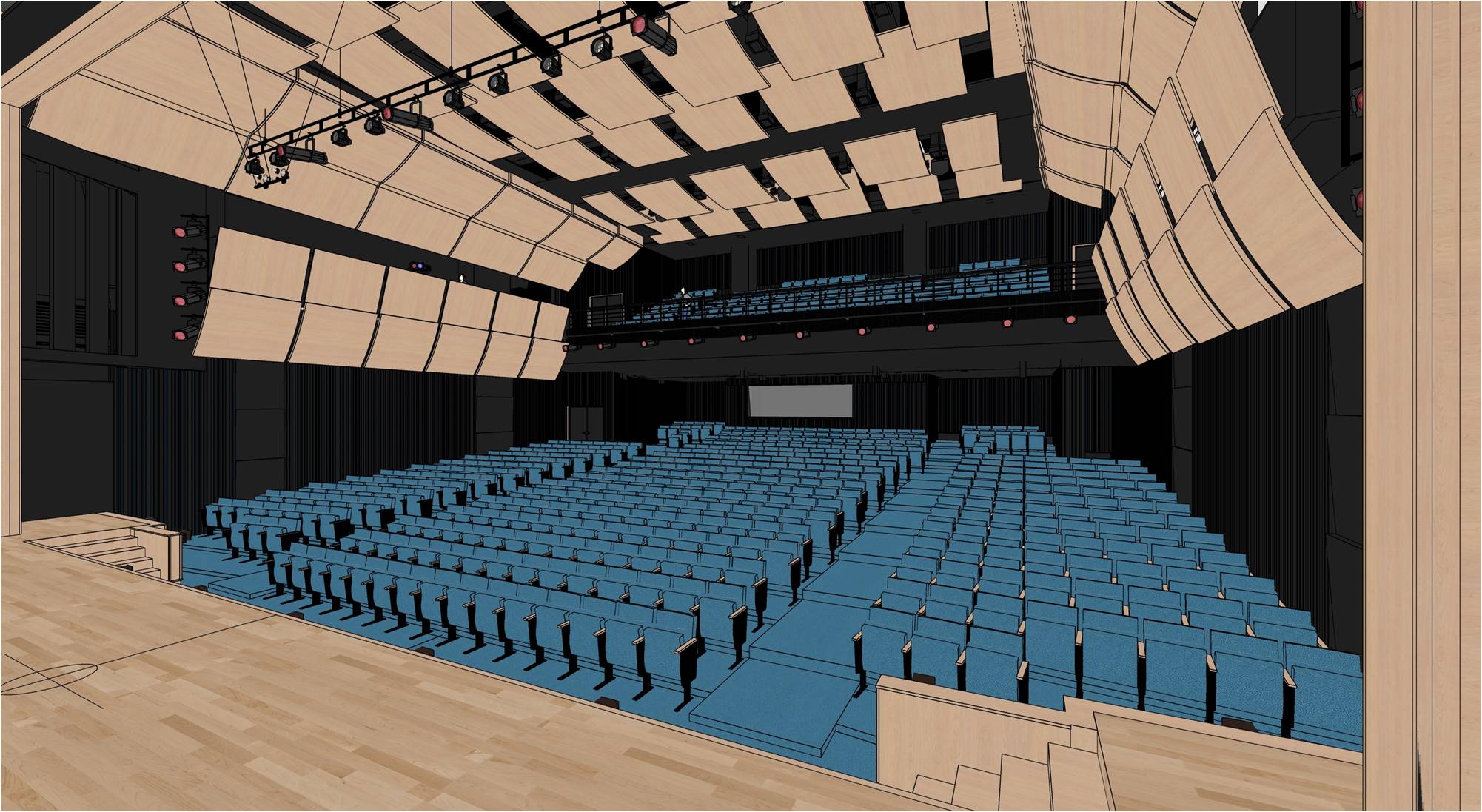
Performance Hall
A world-class venue with exceptional acoustics, the 611-seat Performance Hall will be an important venue for students to gain first-hand experience in performing arts and participate in orchestra, dance or choral!
Featuring an acoustic ceiling tile system that achieves a high level of acoustic performance. An acoustic engineer had been appointed to help us achieve the acoustic requirements which is on par with the standard at Hong Kong City Hall – equivalent to NC-25 (Noise Criteria) Curves*.
A snack bar and lounge will also be available to offer guests an opportunity to network and gather before performance and during intermission.
An audio recording booth is also available.
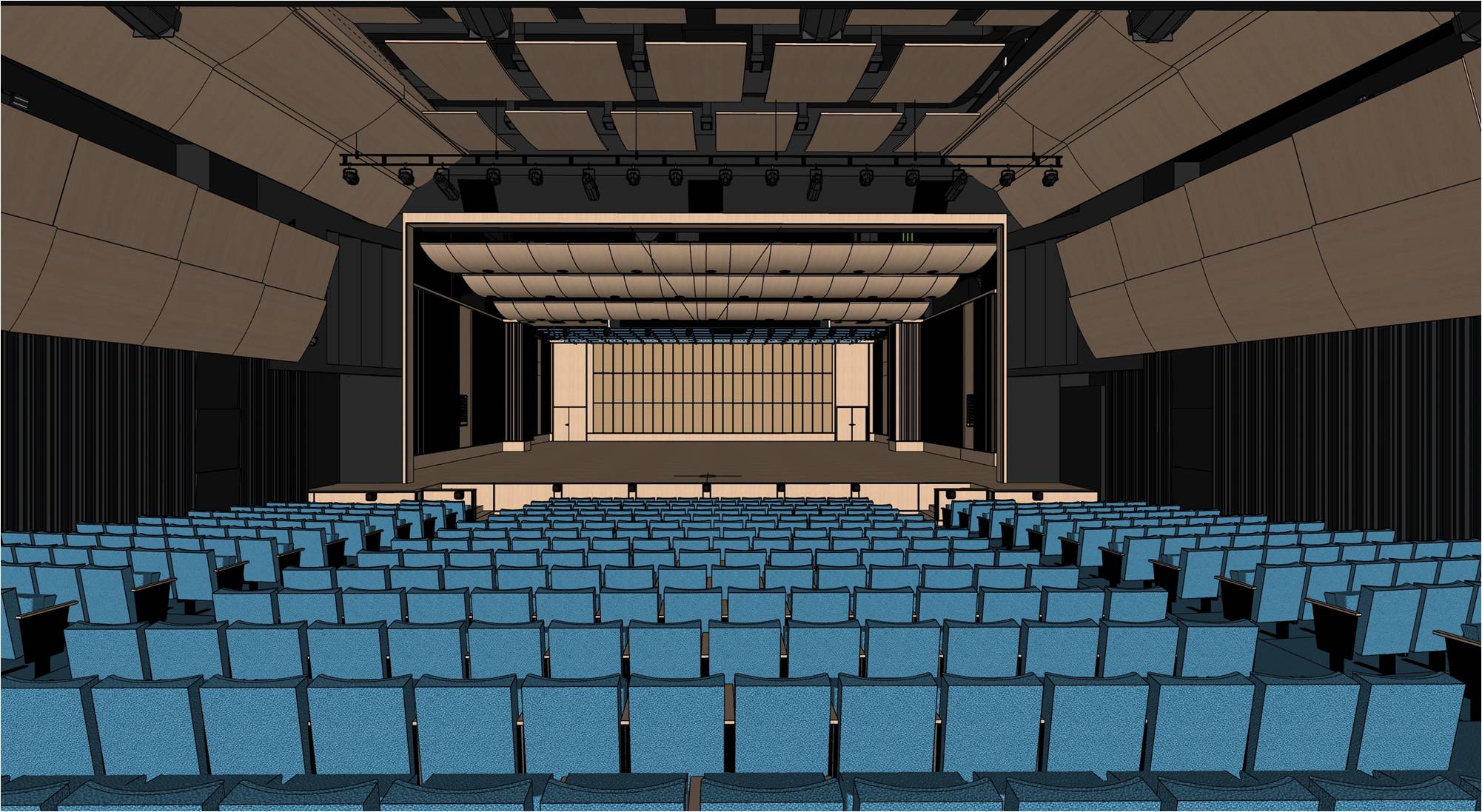
The design and construction of the Performance Hall was complex. It required great technicality and meticulous planning. The design and implementation of the sound-proofing systems needed careful consideration. In addition, we have sought expert advice on how to limit mechanical noise, and the installation of the stage rigging system and AV system.
*Noise Criteria Curves are a measure of the acoustic ambient (background) noise in an indoor environment.
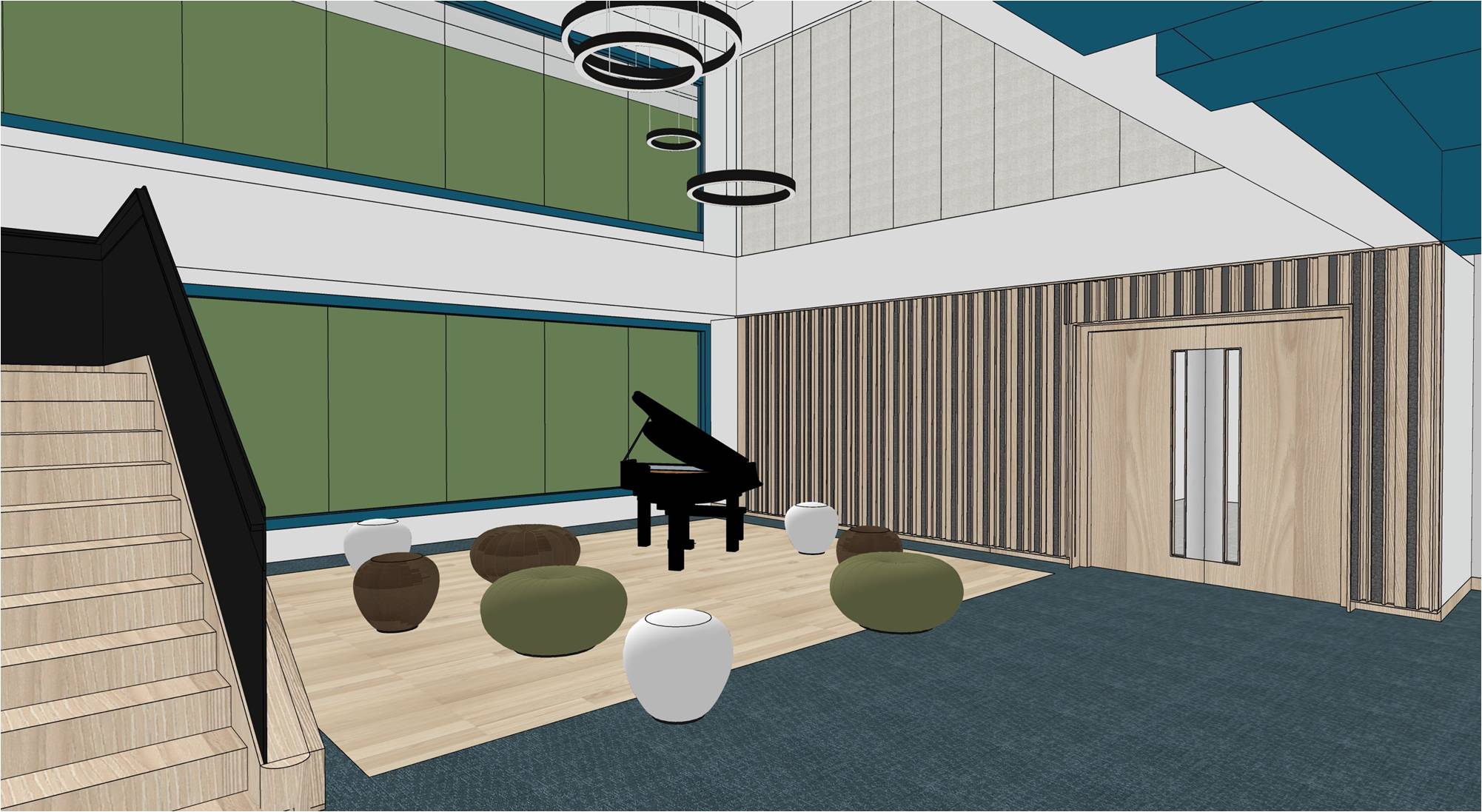
Music Floor
With learning spaces featuring various music genres, the Music Floor concept presents an exciting and significant opportunity to help shape the future of our aspiring students who are keen to get involved with music. Our vision for this music space is to create a diverse, and uniquely cultural precinct, that showcases the music talent of our learner community.
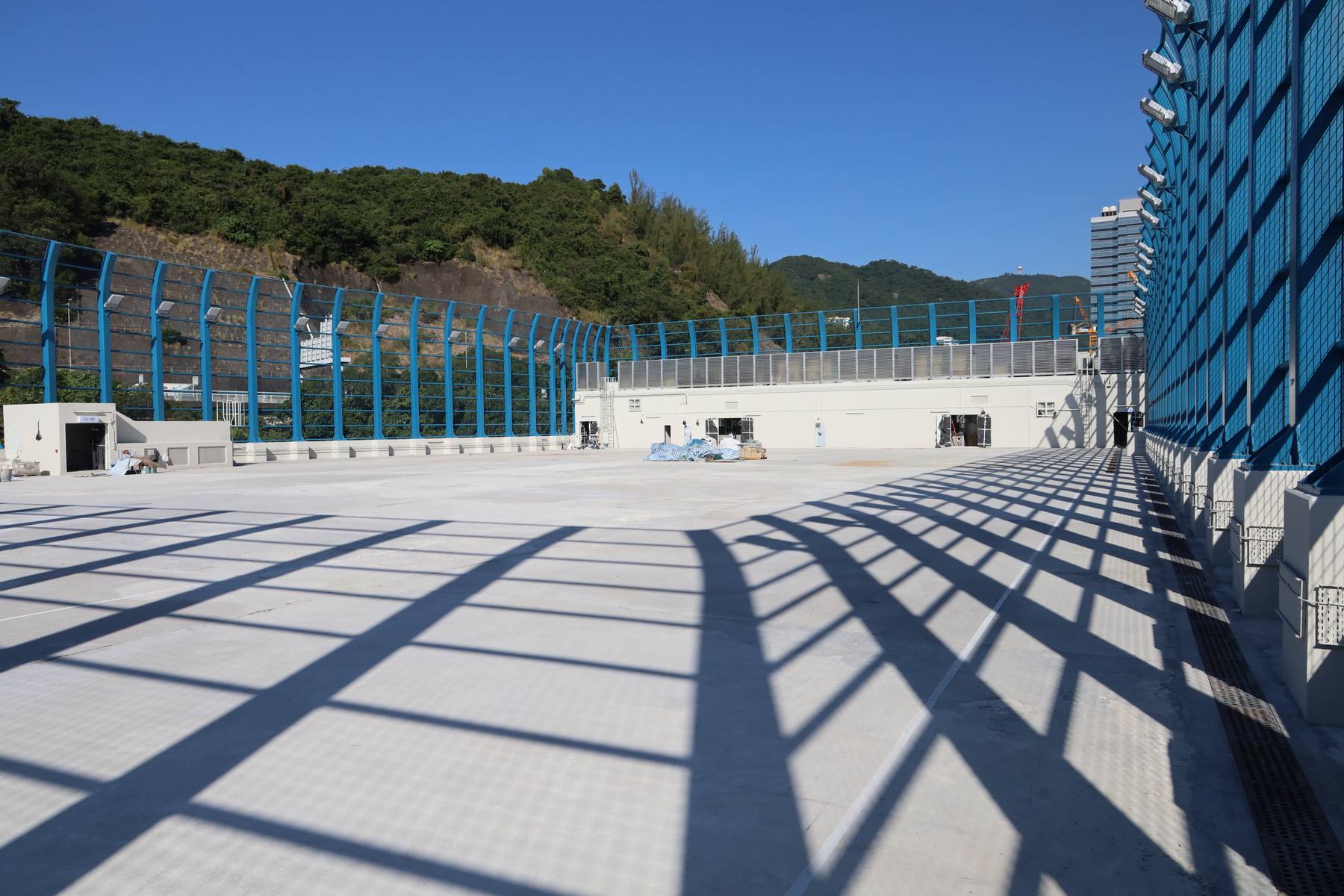
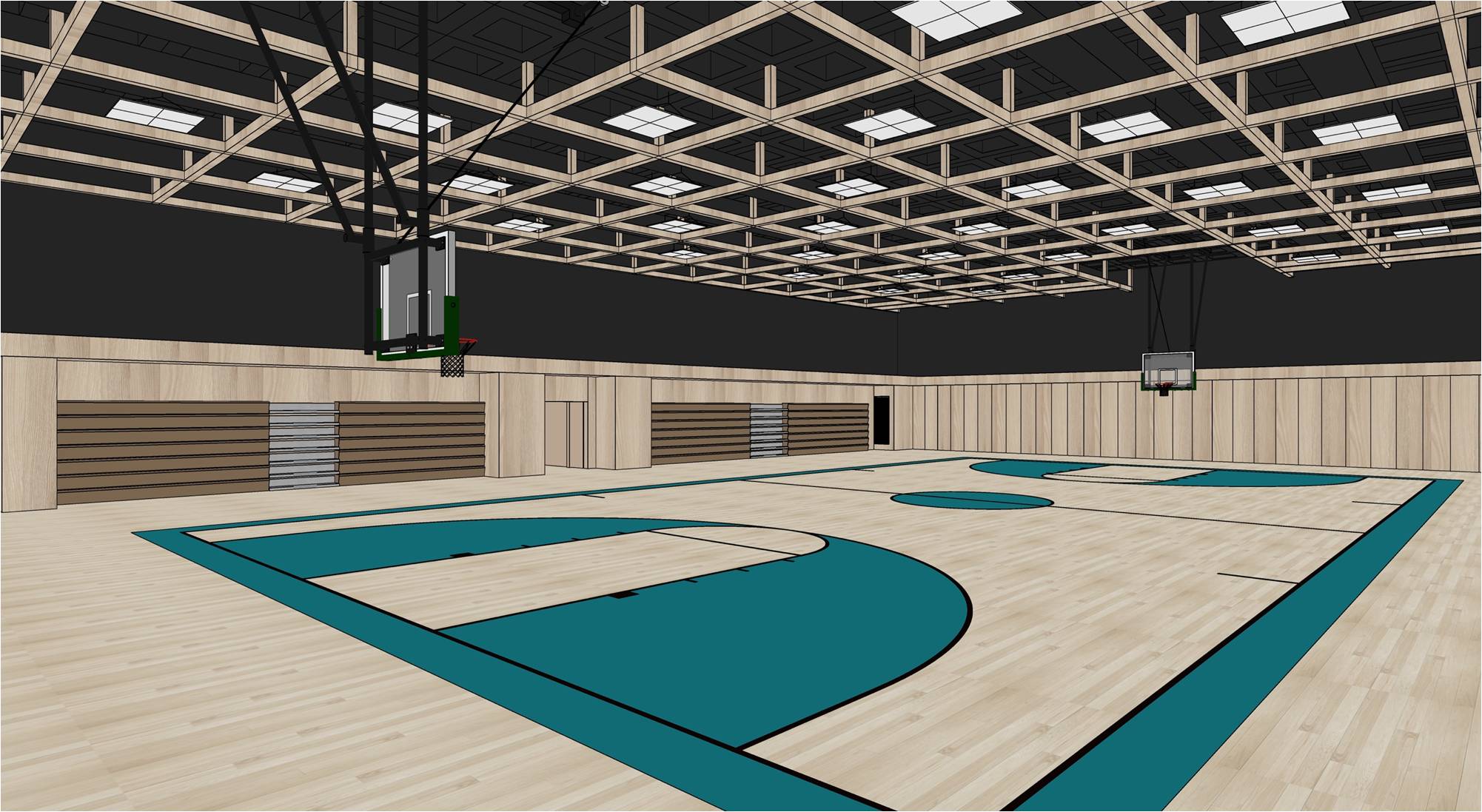
Soccer Pitch, Gymnasium and high performance training facilities
A roof-top 7-a-side soccer pitch that meets FIFA (International Federation of Association Football) standards will be available with artificial turf, offering crucial outdoor sports facilities to nurture children’s sporting development.
High performance training space on the 4th Floor provides additional sporting facilities for basketball training, Judo training, ballet classes, etc.
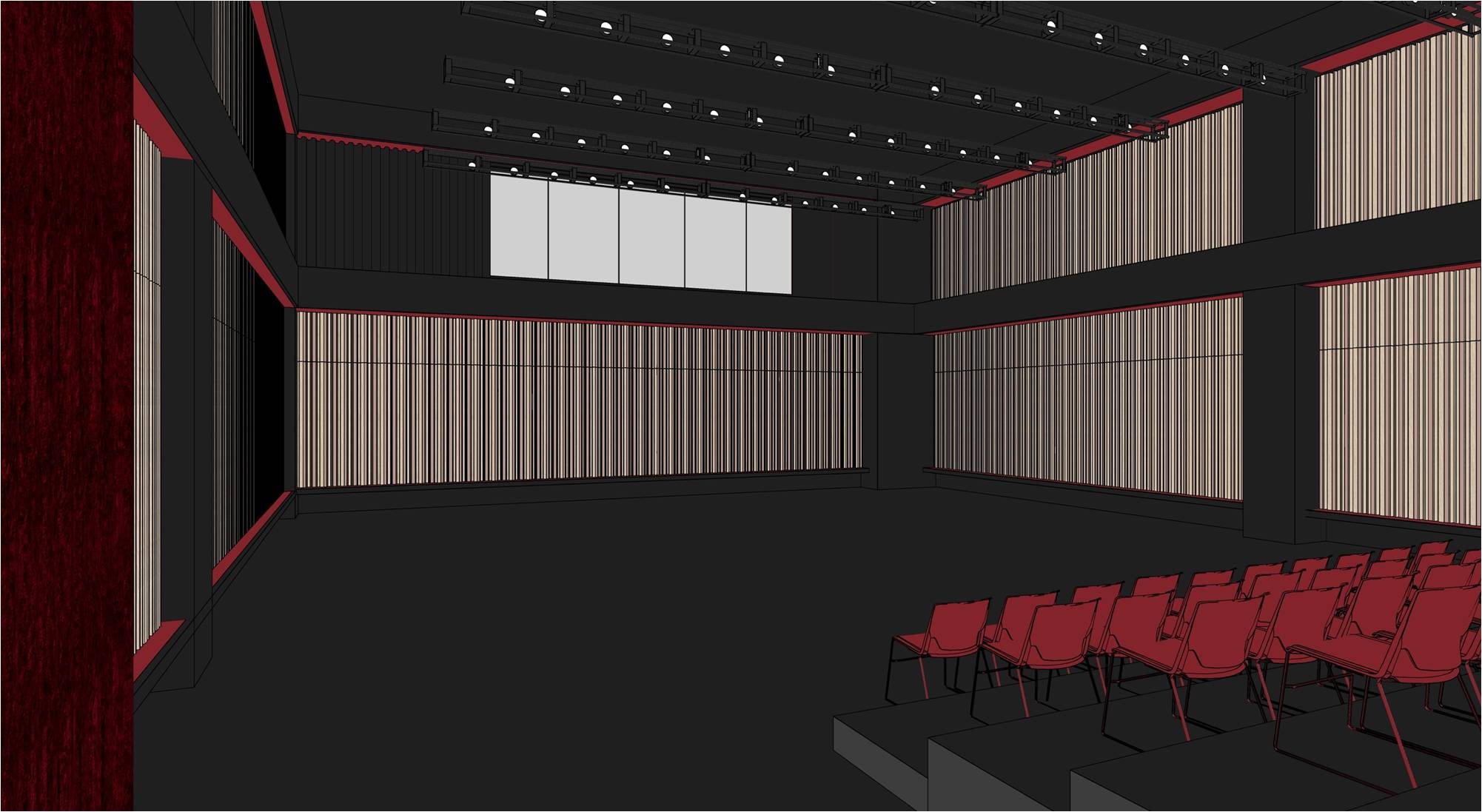
Drama Practice Room / multi-purpose learning space
The Drama Practice Room will provide another creative space for student performers and artists!
This multi-purpose learning space aims to provide unmatched opportunities for CAIS students and local communities in Hong Kong for collaboration and the cultivation of new ideas.
Disclaimer: All images are conceptual or based on current development plans, which are subject to change without notices. The development of Phase II A and B will be subject to funding condition and the school’s future plans.
CAIS students find ways to spread kindness during a pandemic
CAIS students find ways to spread kindness during a pandemic
December 8, 2020
While global community celebrated World Kindness Day on 13 November, CAIS students found ways to cheer others up and spread kindness during our annual Kindness Week which was held virtually this year.
Despite the limited days of on-campus learning, students searched for creative ways to serve the local community and engaged in acts of kindness – which cheered both the giver and receiver!
Corresponding to our school theme “Nerve to Serve”, students were encouraged to find ways practice kindness: helping parents with chores, giving family and friends a call to care of each other and keep the relationship strong during a pandemic, and giving out masks to people in needed.
774 cards, each filled with kind messages and accompanied by 2 face masks, were sent out to 14 community organisations including healthcare professionals, as a way to give a socially distanced hug to our local community.
Advent
Advent
December 4, 2020
 This Sunday is the second Sunday in advent as we celebrate the coming of Christ as Saviour. Last week I wrote about the hope we have in Christ. This week my focus for advent Sunday is love, and this is most beautifully expressed in the love of God the Father, and God the Son.
This Sunday is the second Sunday in advent as we celebrate the coming of Christ as Saviour. Last week I wrote about the hope we have in Christ. This week my focus for advent Sunday is love, and this is most beautifully expressed in the love of God the Father, and God the Son.
It amazes me that God did not institute a way of salvation that we as humans had to fulfil perfectly in order to be saved. Instead, out of his great love, he sent us his one and only Son. A Son who God required to humble himself, and to be obedient, even to death on a cross (Phil 2: 8) in order to save us. What incredible love shown to us!
Just as amazing, is the love of Jesus for us, that as God and a perfect man, he bore the wrath of God that we deserved. At the heart of the gospel is love. My greatest desire for students at CAIS, is that they come to experience this love in a personal and authentic way with God.
Just as God has loved us, so too, we are called to love one another. It is my prayer that not only do you see opportunities to show love, but that you show acts of love in practice to those around you.
Grace and Peace
Richard Vanderpyl
Christian Alliance International School to offer the IB Diploma in Hong Kong
Christian Alliance International School to offer the IB Diploma in Hong Kong
December 3, 2020
 The latest accreditation highlights the distinctive edge the school offers students
The latest accreditation highlights the distinctive edge the school offers students
Christian Alliance International School (CAIS) announced today that the school has been accredited by the International Baccalaureate Organization as an IB World School to offer the IB Diploma Programme (IBDP) in Hong Kong.
CAIS is set to offer the DP Year 1 for Grade 11 students from the academic year 2021/22 and onward and DP Year 2 for Grade 12 students from 2022/23 and onward.
CAIS will offer IB Diploma Programme (DP) to Grade 11 -12 students, in addition to its current Canadian (Alberta) curriculum and Advanced Placement (AP) courses.
The IBDP is an academically challenging two-year pre-university program for students in Grades 11 and 12. It is recognised as one of the most influential international education programs in the world and develops students intellectually, socially, emotionally and physically.
“We are thrilled that the school will offer this highly recognized diploma curriculum to our students who are aspiring leaders looking to make a positive impact globally,” said Richard Vanderpyl, Head of School at CAIS.
“The IB Diploma Programme will be built on our Christian-based education and it will strengthen our work connecting students to leading universities worldwide with our emphasis on students’ personal and character development.”
CAIS has officially become one of the 5,200+ IB World Schools and 3000+ IB Diploma schools.
“Our uniqueness is that it is the only international school in all of Asia that offers three curricula and qualification pathways: World-renowned Alberta curriculum, International Baccalaureate Diploma Programme and Advanced Placement courses”.
In line with the IB mission statement, CAIS also strives to develop inquiring, knowledgeable and caring young people who help to create a better and more peaceful world through intercultural understanding and respect.
CAIS will benefit from a variety of teaching resources and support from the IBO. This includes participation in world-wide teaching forums, and sharing information/ resources with other IB institutions around the world.
CAIS Innovates: Digital Literacy Program
CAIS Innovates: Digital Literacy Program
December 2, 2020
The coronavirus pandemic has changed every aspect of our lives and the world has turned to technology to provide solutions and gain new insights to help us fight the virus. But even before the pandemic hit, technology has influenced many facets of life and has successfully diffused across industries. A comprehensive technology education that invites children to be curious and enjoy the process of learning new ideas is pivotal for children of all ages.
The power of technology and innovation is indeed immense and the two areas are often intertwined.
For instance, virtual learning is made possible and becomes the new normal during the pandemic.
The rise of telemedicine is another form of digital transformation, allowing patients to get medical advice through telecommunications technology in a Covid safe way.
Technology innovation is constantly evolving, and as such, the academic programs at CAIS need to adapt to its evolving nature.
Digital Literacy is a new program that CAIS offers to Grades 7-9 students. It aims to equip students to build life skills and resilience. It offers an enabling environment for students, to explore, connect and engage with their community. Students learn to be creative and open-minded to acquire digital skills that are essential for their personal development and to be “future-ready”.
The CAIS’s Digital Literacy Program is one of the first steps students are taking to experience their “Tech Future” and grasp the opportunity laid open to them by digital technologies.
We invited CAIS teachers Mr Hanani Cha and Mr Chris Siu to talk about the program.
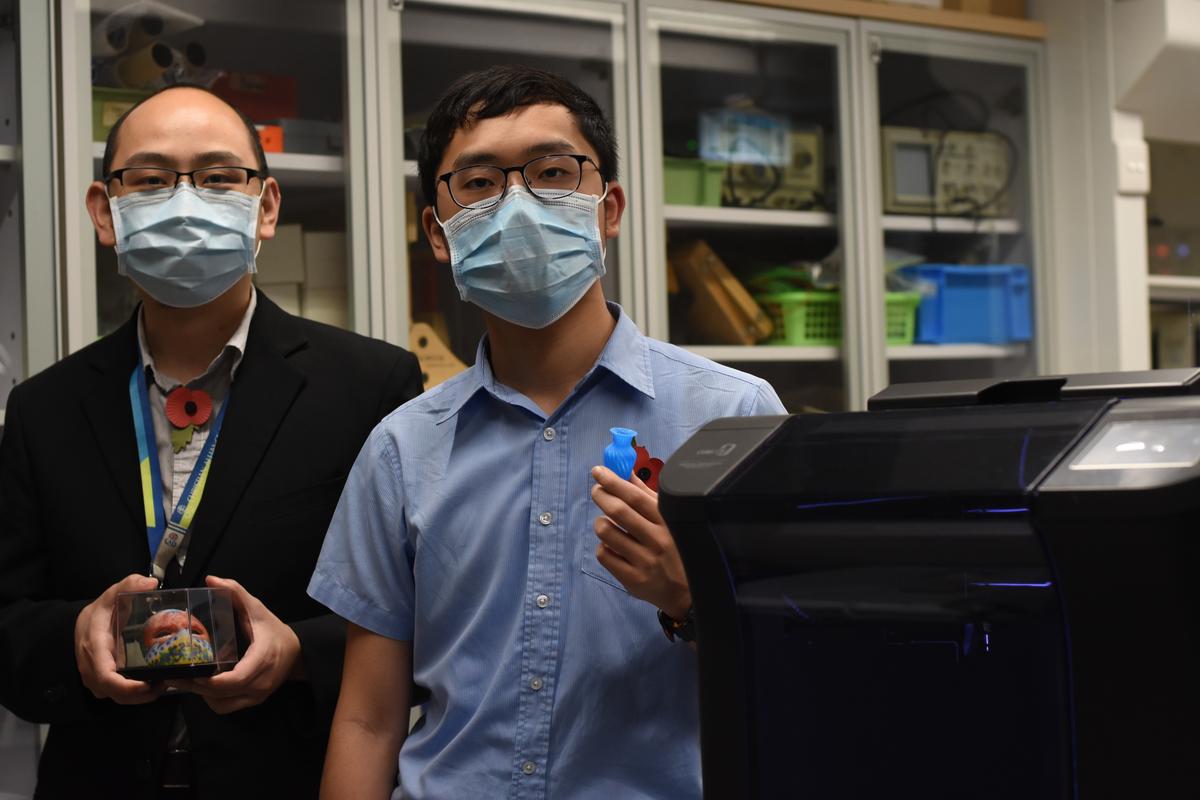 What is Digital Literacy Program?
What is Digital Literacy Program?
Digital Literacy program focuses on developing students’ 21st century skills such as critical thinking, logical thinking, and collaboration using digital technology.
New equipment and learning tools such as 3D printer and software are introduced alongside a redesigned curriculum to help spark students’ interests to explore and develop digital skills.
The student-centered learning approach is another highlight of the program providing ample opportunities to engage in the use of these skills.
Teachers and students keep learning throughout their lives as change is a constant in technology, and keeping up-to-date with technology can help us at home, school and at work.
How did the idea come about?
As a school that’s dedicated to preparing students to take on challenges in the future, providing students an education that harnesses digital technology is essential. The Program is not theory based but very practical in terms of application.
Digital skills are as important as academic skills, enabling students to be agile and flexible. This year we have experienced the biggest shift to remote learning and working due to the pandemic. The adaption of new technology has been accelerated at an unprecedented speed.
By embracing digital technology, we are able to accommodate and adapt to changes.
Furthermore, since students are exposed to technology daily, it is important for them to learn how to use the technology ethically and safely.
What are the expectations?
Students are exposed to a curriculum that equips them with transferrable digital skills, as well as problem-solving, creative and communication skills.
The Program covers a wide range of topics such as Digital Citizenship, coding, 3D printing, robotics, and applying digital technology to solve real life problems.
Besides 3D printer, what other learning tools will be used in the Digital Literacy program?
We will be using robotics, Micro:bit (tiny circuit board designed to help kids learn to code and create with technology), Makebox (DIY tech kit), and a variety of software for programming.
What are the benefits of using 3D printing technology in education?
This helps students to learn about 3D environments, spatial intelligence, logical thinking, creative thinking, visualization of ideas, and is applicable as a collaboration across subjects.
Advent
Advent
November 27, 2020
 When our children were very young, we lived in a different part of New Zealand to where their grandparents lived. I can still remember their reaction when my wife and I would say ‘Grandma and Grandpa are coming to visit.’ They would be so excited and eagerly look forward to their arrival. I do suspect part of their joy was because Grandma and Grandpa always brought presents with them!
When our children were very young, we lived in a different part of New Zealand to where their grandparents lived. I can still remember their reaction when my wife and I would say ‘Grandma and Grandpa are coming to visit.’ They would be so excited and eagerly look forward to their arrival. I do suspect part of their joy was because Grandma and Grandpa always brought presents with them!
This Sunday (29 November) marks the beginning of the ‘Advent’ season, in the lead up to Christmas. It is celebrated over the next four Sundays, and there are many traditions associated with it.
The word ‘Advent’ means “coming” or “arrival”, which for Christians refers to the coming of Christ as a child, and to the return of Christ in the second coming.
I am sure you have seen Christmas wreaths in stores, maybe you even hang one on your door! The wreaths usually hold four to five candles in them. The candles represent hope, love, joy, peace and Christ. Each of the four virtues is perfectly represented in Christ, and indeed, He is hope, love, joy and peace.
The first coming of Christ gives hope to people in that God was willing to give of himself to save his people. If God was willing to give his only Son to save us, then surely we can trust and place our hope in God that he will save us. But it also means that we can hope (trust) in the promises of God too. He promises to watch over us, to guide us, to protect us, to comfort us.
Today, even in the midst of turmoil and uncertainty we can have our hope in Christ, both for temporal and eternal needs.
We have seen how futile it is to place our hope in things that are never guaranteed, such as wealth, job security, health or even in people. The most amazing hope that is guaranteed, that is sure, is a hope placed in Jesus Christ. Jesus Christ removes hopelessness and gives us the fulness of hope.
As we draw near to Christmas, think about the hope that Christ alone gives to you.
“Blessed is he whose help is the God of Jacob, whose hope is in the Lord his God”
– Psalm 146:5
Richard Vanderpyl
Head of School

